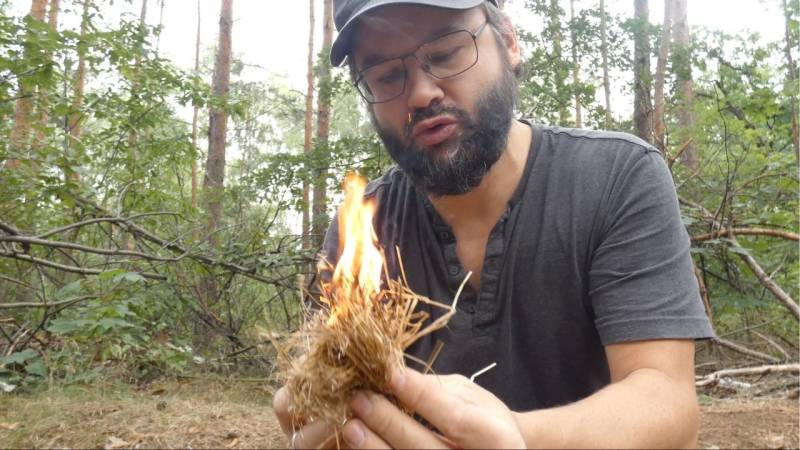
Tinder and kindling: Where is the difference?
👉 The key facts from this guide
- Tinder and kindling are both important for starting a fire, but they serve different functions. Tinder is used to ignite a flame, while kindling is used to build the flame into a fire.
- Tinder should be very fine and burn quickly. You can find natural tinder in the wilderness or buy ready-made tinder.
- Kindling can be obtained by collecting or splitting wood. It should be dry and prepared in various sizes.
- The preparation and organization of tinder and kindling are crucial for an efficient fire.
- A tinder nest is useful when you have something glowing and want to turn it into a fire.
Fire forms the essence of survival spirit.
Although you can survive without fire, the numerous advantages make it indispensable.
It provides warmth, light and allows you to cook food and boil water.
Generally, you need three materials for a fire: tinder, kindling, and fuel. Your fuel is wood, but what exactly are tinder and kindling?
Let's clarify this in the guide.
Tinder and kindling are not the same
Your goal is usually to ignite a fire quickly and effectively, without much effort or resource waste.
For this, the right preparation is essential, and you should know what you need for it. But what exactly is tinder, and how does it differ from kindling?
So what is the difference between tinder and kindling?
Tinder is used to ignite a flame, and kindling causes it to build into a fire and then continue burning for a while.
Firstly, tinder and kindling help create a fire from your initial flame.
Tip: Watch my short video here:
If you try to ignite a fire directly by putting your flame against the wood, you will most likely fail.
Tinder is the first station for a fire to form from a flame. You can find tinder in the wilderness or buy it pre-made.
Either way, your tinder should be very fine and easily set on fire.
Natural tinder
In my opinion, you don't have to buy tinder. There is a whole range of plants and materials that nature provides for free.
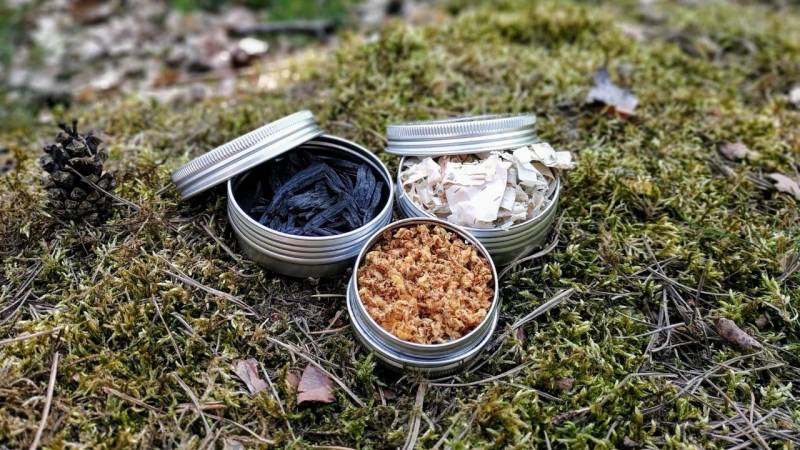
Some of my favorite plants for tinder are things like:
- Cattail
- Birch bark
- Dry flowers
- Dry leaves
- Dry grass
- Fatwood (resinous wood)
- Handful of thistle seeds
All you need to do is look out for dry and fibrous raw materials. You can then split the fibers. The smaller the material, the faster it will burn!
Don't worry, I'll give you my guide to tinder, where I specifically address the different sources: You can find the guide here.
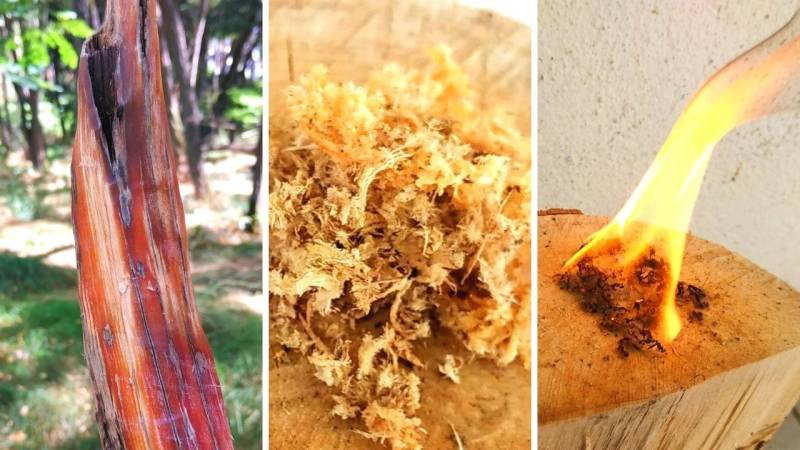
An example of tinder made from plant fibers
For further processing, I use a bowl and the handle of my knife. If you're unsure with the knife, you can use any other blunt object. Then I rub the material until it's very fine.
Now you can take the ends of the fibers and tie them together with a thin rope or simply with other fibers. This will give you an ideal bundle of tinder. For one bundle, I usually take about a handful of the starting material. That should get a fire going!
You can create some bundles preventively and store them in your backpack.
Here's a video of me igniting a fire with a fire steel:
Homemade Tinder
As mentioned before, I don't think much of human-made tinder - there's simply enough in nature. Nevertheless, for the sake of completeness, I will still address it. Some of you might prefer this kind of tinder.
This type of tinder is often much more effective than natural tinder. It is often made from wool and paraffin wax. Although both are safe for the environment and health, they still cost money. You can certainly make your own tinder much cheaper.
Here's a video of me igniting a fire with cotton balls and Vaseline:
Homemade tinder often contains a fire accelerator such as candle wax, Vaseline, or resin - which makes it much more effective than natural tinder.
What is a Tinder Nest?
You can think of a tinder nest as a kind of bird's nest. It is made up of fine and very dry materials such as hay or grass.
You need the tinder nest when you have something glowing and want to turn it into a fire. The embers then jump onto the dry tinder nest and flames are created by blowing on it.
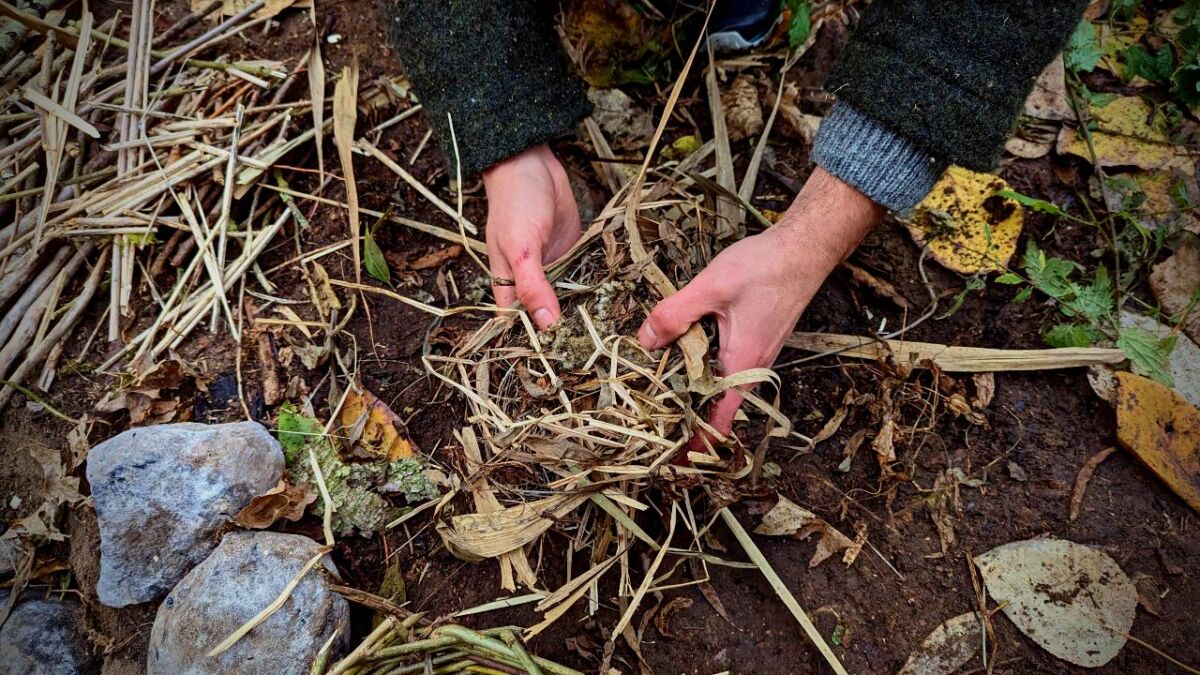
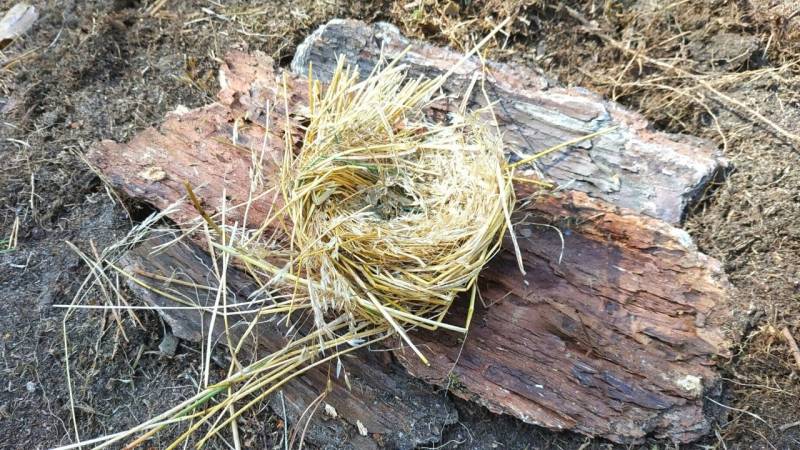
How to Get Kindling Wood
Kindling wood can be obtained through two methods:
Collecting Kindling Wood
When collecting, it is important to choose only dry wood. Avoid green branches as they will only produce a smoke-free fire.
I categorize kindling wood into three categories:
- Matches: These are fine small branches, such as those of a spruce or pine, that are as thick as a matchstick. This type is placed directly on the kindling and catches fire immediately. This is essential because it determines whether your flame becomes a fire!
- Pencils: These are branches the size of a pencil that you place directly on the matchstick-thick branches.
- Thumbs: The third type is slightly larger twigs, pieces of wood, and branches that I add gradually - something the size of a thumb. This gives the fire enough room to breathe while new fuel is added at the same time.
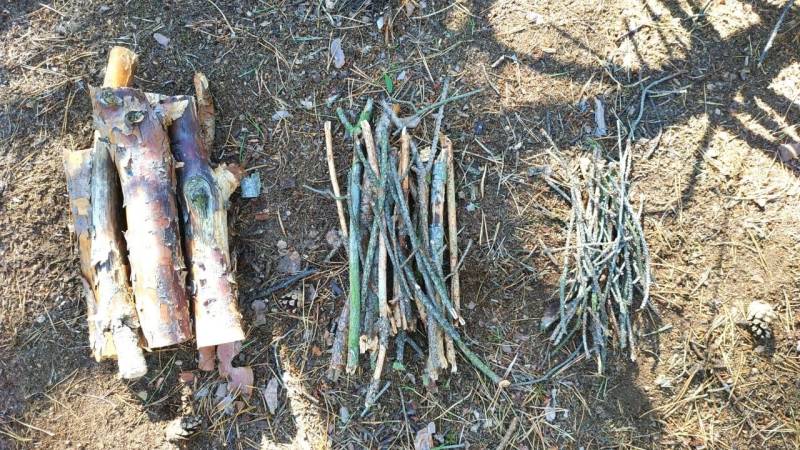
Splitting Wood for Kindling
The other method of obtaining kindling wood is to split wood to the desired size. Even when chopping normal firewood, smaller pieces of wood often splinter off that you can use. However, you can also chop kindling wood intentionally.
However, you should not just randomly strike the log with an axe, but split it purposefully. For this, I often use a self-built wooden hammer and place the axe at the desired spot. This way, I can purposefully split the desired size of kindling.
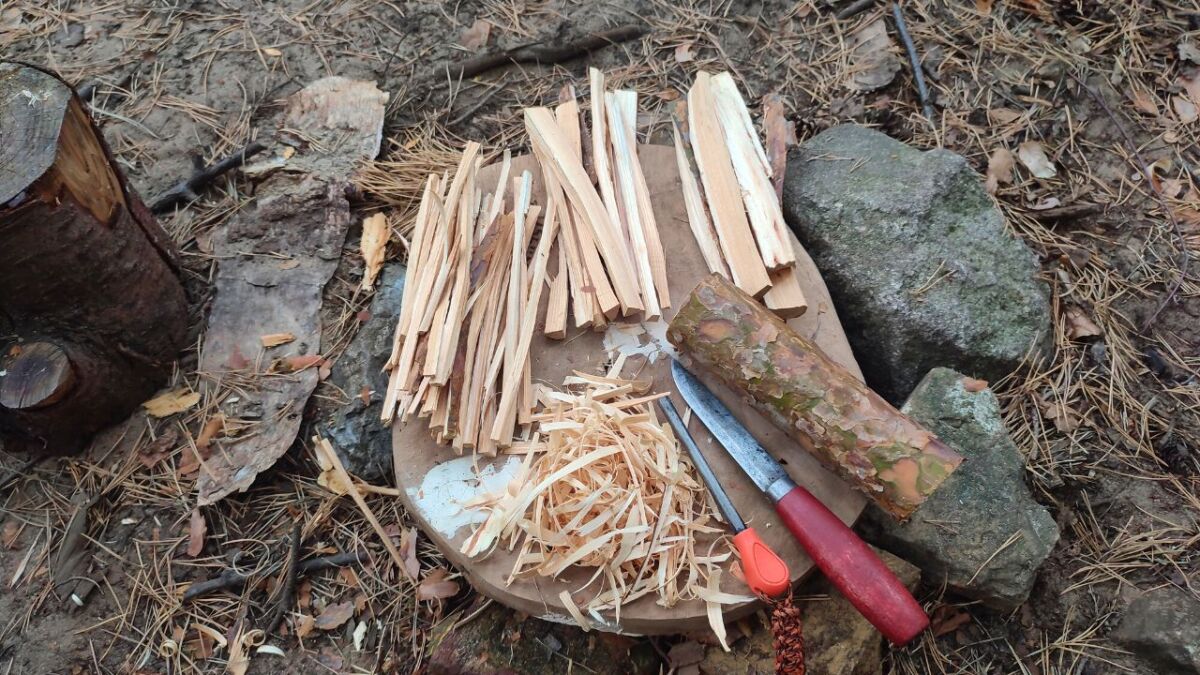
I like to use a combination of both methods. This way, I don't spend too much time searching for suitable material in the forest and at the same time, I use the wood that I already have.
Preparation and organization for making fire
The appropriate preparation is the key to a good fire. Therefore, you should definitely plan enough time. Especially if you still want to search for the respective materials in the surroundings.
Therefore, I recommend that you prepare your kindling bundles in advance so that you will only have to search for your kindling wood. Then, I organize everything so that it is not spread throughout the entire camp and then start my fire. I arrange all the above-mentioned categories in separate piles. This way, everything is within reach, I can start my fire with control and later tend to it.
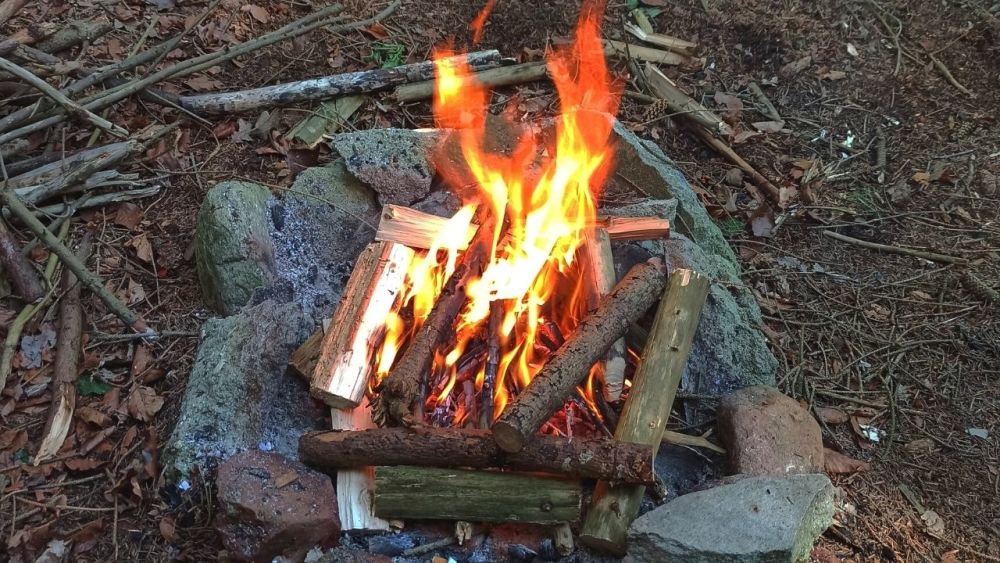
First, I start with my kindling bundle. It's okay if one doesn't work, I have another one ready to use! Then, I gradually add smaller kindling wood to the bundle. Afterwards, I use matchstick-sized kindling to really get the fire going. Then, I add the larger wood. Nothing should stand in the way of an efficient fire.
When dealing with a larger crowd, it is always best to prepare more matches. I have often thought that I had enough and later had to go out again, to the detriment of my fire!
Read also
Making Fire without a Lighter or Matches (18 Ways) - Make fire without a lighter or matches? Learn now with my 18 ways how to ignite a fire without a lighter or matches.
Questions and Answers
Do I still need tinder if I want to make a fire with a fire starter?
Tinder is definitely required because the fine and hot spark from the fire starter requires very dry and fine material in order for a spark to become a flame.

What if my tinder nest doesn't catch fire?
If the tinder nest does not catch fire, you need to try to ignite it again or choose another ignition method. It may also be too damp.
Which types of wood are unsuitable for burning?
Wood that has been treated with chemicals, paints, or varnishes is unsuitable for burning.
What material is best for tinder?
The best tinder materials are dry, clean, and easily flammable materials such as cotton, fine plant fibers, or even cotton pads or pulled apart tampons.
Conclusion: Preparing tinder and matches is essential
For the perfect fire, you should be well prepared and have both tinder and kindling ready. Both materials ensure you have a quick fire that burns reliably.
Tinder is fine and burns directly. Kindling, on the other hand, is larger and ensures that out of a flame a fire emerges which can keep you warm and nourished all evening.
The better you understand the difference between tinder and kindling, the easier it will be for you to successfully start a fire time and time again.
To learn more about other ways to light a fire in the wilderness and when to use which type, read the Guide to Making a Fire.

Sources for the guide
https://www.survivalworld.com/fire/tinder-vs-kindling/
https://ssfirepits.com/tinder-vs-kindling-whats-the-difference/
https://www.chemie.de/lexikon/Paraffin.html#Gefahren
https://de.wikipedia.org/wiki/Zunder

Author of the guide
Martin Gebhardt
Hey, I'm Martin. On my blog, you will learn the basics and numerous details about living in the wild. I think survival, bushcraft and the good life in nature are the keys to happiness. Find me here on Instagram or on YouTube. You can find more about my mission on the About Me page.
Was this guide helpful?
27 people found this guide helpful.
5.00 out of 5 points (27 Ratings)
Comments (0)
This post may contain affiliate links. So if you click on the links and make a purchase, I will receive a small commission at no additional cost to you. Click here, to learn more about it.


